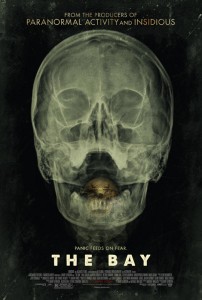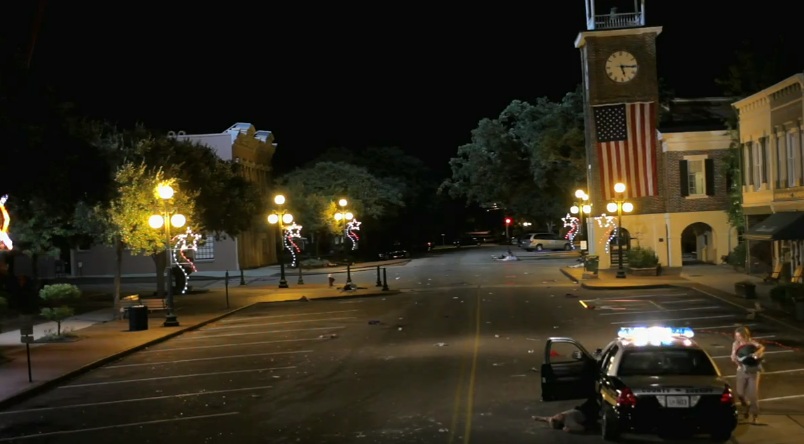Directed by Barry Levinson
Written by Michael Wallach
For whatever reason, very few auteurs have emerged from the genre of the found-footage film. The team behind The Blair Witch Project flamed out after the first sequel; Paco Plaza has done well in his native Spain with three [REC] films, but his American remake Quarantine fell flat. Oren Peli is the closest, but even he is more of a mogul than auteur; he has produced all four Paranormal Activity films as well as The Chernobyl Diaries and other found-footage products, but his only directorial efforts were the first Paranormal Activity and the upcoming Area 51.
The new Peli-produced The Bay hopes to change that trend, by putting a found-footage film into the hands of Oscar-winning director Barry Levinson (Rain Man, Wag the Dog). The result isn’t Oscar material, but it’s a neatly scary picture that puts a new spin on a format that would have seemed to be done to death. Bringing an auteur on board really did make a difference.
Levinson, as with Diner and the TV series Homicide: Life on the Street, is working in his native Maryland. Fauna have been dying en masse in and near the Chesapeake Bay in recent years: 2 million fish washed up on its shores in January of 2011, and 100,000 fish were found dead in nearby creeks in May of this year. The movie uses these events as a framing story for a fictional disaster that supposedly took place outside Baltimore in a small town called Claridge on July 4, 2009, and was subsequently covered up by the government. The found footage of the event is not from any one camera, but every camera in the town, and is narrated by a reporter (Kether Donohue) who has edited it together for a Wikileaks-style website.
Levinson understands these towns well, which pays off strong at the beginning of the film as he establishes the setting. There’s no question from minute one that large swaths of the town will be devastated by whatever-it-is, which adds a poignant sadness to the typical Independence Day festivities at the beginning. The Wikileaks-style format also prevents a number of the hoary cliches of the found-footage style; only once does one character ask another, “why are you still filming this?” – and for once the response is actually logical.
What triumphs this movie has are triumphs of tone, because the screenplay by Michael Wallach is oddly subdued and slightly disjointed. Levinson is aiming for a slow reveal of the horror a la Aliens, but once the creature is revealed, the story keeps circling back to parts of the town that don’t know about the horror and revealing it again. It’s effective at first, but eventually it leads to the audience waiting for an even bigger scare that never really arrives. The Bay is just 84 minutes long but it still feels padded, with not one but two montages intended to connect dots that the audience should have already connected in their heads.
Still, The Bay has such chilling scenes of body and environmental horror that the right audience will be deeply satisfied. The film screened as part of the New York Film Festival’s Midnight Movie program, and it is a nearly perfect midnight movie: hide-your-eyes disgusting without being gore just for gore’s sake. There’s a heartfelt environmental message to be had as well, and it’s by no means a tree-hugging one: we must respect our waterways, Levinson says, because we depend upon them with our very lives.
-Mark Young
The New York Film Festival celebrates 50 years and runs from September 28 to October 14, 2012. For a complete schedule of films, screening times, and ticket information, please see the Film Society of Lincoln Center’s official site.




